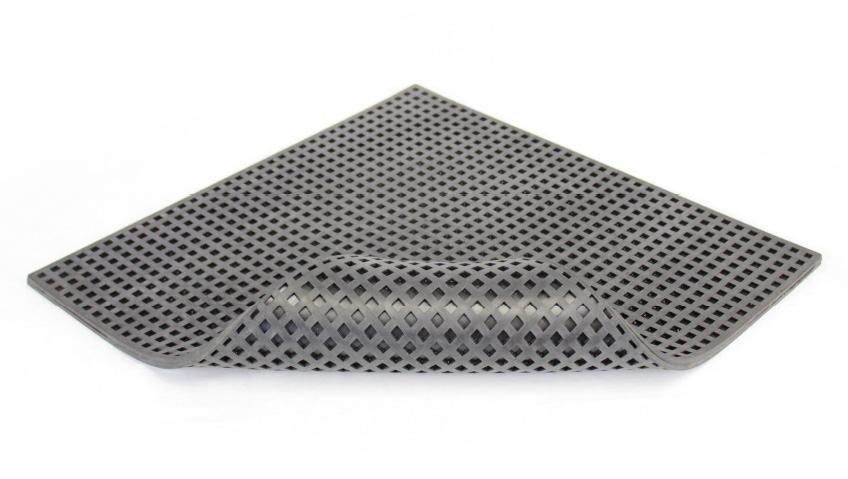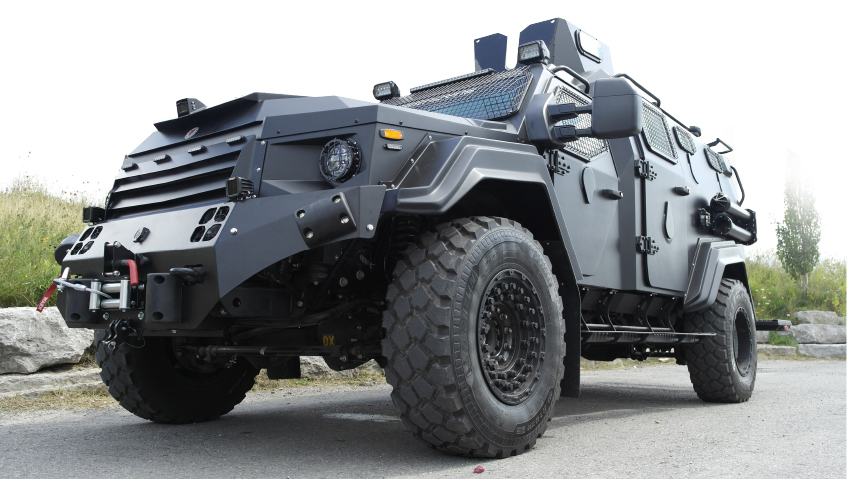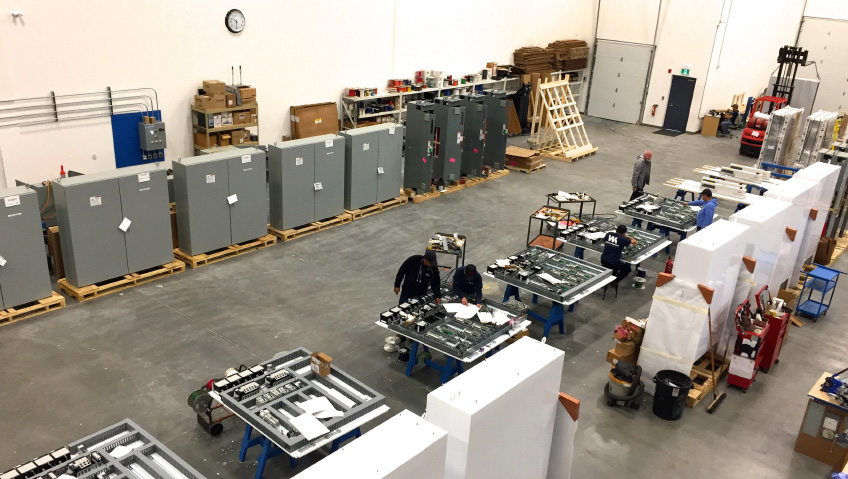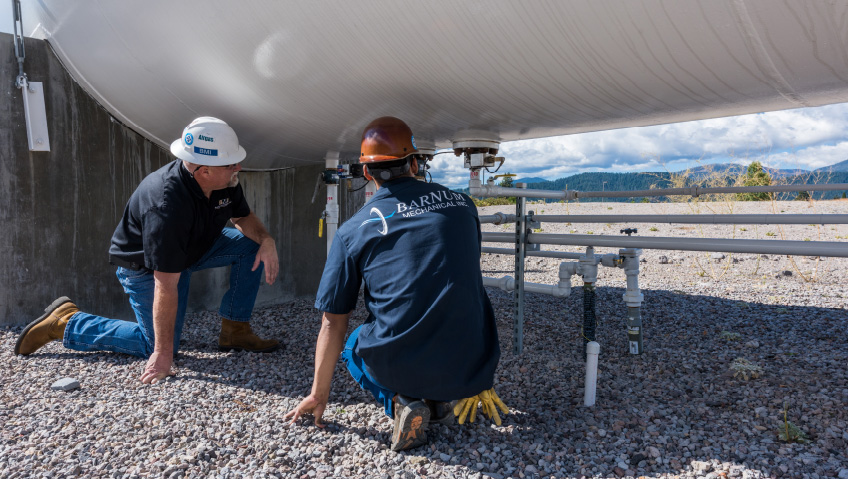Vibrations are all around us and, by and large, we may not think much of them when we are exposed to them for a couple of seconds. But they can be a serious problem in many ways for manufacturers. Consider the impact of imbalanced rotating parts, uneven friction, or the meshing of gear teeth. Vibrations like these can cause a number of issues for manufacturing equipment that can hurt productivity and the bottom line. And when employee safety and comfort are a top priority, you also need to protect shop-floor workers who operate machines with noise and vibration issues.
Simply put, there’s a lot at stake.
VibraSystems Inc., headquartered in Concord, Ontario and Bonita Springs, Florida, has been working on solutions to noise and vibrations since 1979, and, like many good things, all this work started by accident.
“At that time, I was chief engineer and plant manager of a food equipment engineering company,” says Phil Dreff, President of VibraSystems. “I was developing a machine and it needed anti-vibration mounts. I looked around but there was really nothing available on the Canadian market. And when I did receive a part from the USA, I looked at it and thought, ‘okay, it’s not very complicated but it’s very expensive and delivery time was over 10 weeks?!”
Deflated but not defeated, Dreff decided to solve the problem himself, as many highly capable engineers are inclined to do. Having a machine shop and a factory full of equipment at his disposal, he designed a mount to reduce the vibration in the machines the factory was manufacturing at that time, and from that moment on started using it for his own production.
“I had a lot of salespeople coming in, offering me tooling and machinery to buy. I showed them the little mount, made a simple brochure, and people started to buy it. That’s how VibraSystems was born.”
Eventually Dreff left the food equipment company, but he took what would become the multinational VibraSystems with him.
We may have a general sense of what vibration is. That is, we know it when we feel it. But there are three aspects of vibration that come into play for manufacturing that can cause damage to the tools and equipment on the factory floor.
Vibration itself is multidimensional in nature, so there are different aspects that can impact machinery, which is a bit of an engineering science lesson in itself. There’s amplitude, which includes the magnitude and velocity of the vibration. There’s frequency, which is the number of oscillations that take place over a given period of time. And then there is phase, which is the waveform of a particular vibration.
From a manufacturing point of view, there are two different particular aspects of vibration that can affect machinery. The first is forced vibration. This is when an external force causes the surrounding area it’s in contact with to vibrate. Picture the vibration that comes from a washing machine with an unbalanced load; that vibration gets transferred to the floor that it sits on as force is applied, causing an object to vibrate. Then there is natural vibration, where the vibration is not coming from an external force but from the moving parts within a machine.
No matter what type they are, vibrations can ultimately reduce efficiency of the machines and affect the quality of the parts manufactured on those machines as well as shorten the lifespan of equipment—all of which hurts a manufacturing business. And for people who operate machinery, the energy of a machine can be transferred to their body on an ongoing basis. According to the Canadian Centre for Occupational Health and Safety, exposure to vibration can cause fatigue and loss of balance. In addition, studies of bus and truck drivers found that ongoing exposure to the vibration can lead to circulatory, bowel, respiratory, and back disorders.
For Dreff, while coming up with a smart solution for vibrations, VibraSystems was not actually front and centre for some time. “In 1983, I started my own company, DBE Food Equipment, which became one of the biggest manufacturers of baking equipment in Canada,” he shares. He headed the company for 30 years, eventually selling it. But he didn’t exactly head out for the golf course once he sold it. “I lasted six weeks in retirement,” he tells us.
All this time, on a small scale, VibraSystems had been producing anti-vibration mounts. Until this point, VibraSystems was just targeting the local market, but fresh from the sale of his other company, Dreff was in a position to invest in development. “Every year, we developed a new product. There is not a single year when we did not develop one or two new items in addition to the existing line,” he explains.
At that pace, the company finished development of a complete line of anti-vibration elastomer-steel molded mounts and started a multi-year development of a spring mount and spring hangers line for the HVAC industry. After finishing that, VibraSystems developed a line of seismic restrained mount bridge bearing pads for civil engineering and construction industries.
Dreff and his experienced engineering team are known for tackling complex custom work that other producers shy away from. Problem-solving and innovation are part of the day-to-day. And not only has VibraSystems accelerated its anti-vibration solutions, the company has also expanded to support a range of industries, including industrial, mining, pharmaceutical, automotive, and defense, making inroads in these markets.
The defense industry, for instance, requires a number of anti-vibration solutions. In many situations, military vehicles will have the same issues as civilian ones, but they are amplified because of the nature of demanding environments. A NATO research paper on the effects of vibration on military vehicles like armoured personnel carriers noted additional factors that impact the amount of vibration that can occur at a given time or on a particular vehicle, like moving through rough terrain at high speed with specialized equipment and weapons that may be firing, all at the same time.
To help counter damaging and potentially dangerous vibrations in different industries, VibraSystems offers custom-made mounts for multiple applications to OEM companies. VibraSystems has developed hundreds of different custom-made vibration dampeners for many customers who require products specifically designed for their unique applications.
Not only did Dreff expand the solutions that VibraSystems offers, but he also expanded the company’s footprint beyond Canada with its U.S. headquarters in Bonita Springs in 2017. About 60 percent of the company’s business comes from the U.S., and by having a presence in America, VibraSystems is in a better position to work with different levels of government and private sector corporations across the country.
While VibraSystems has largely catered to industrial fabrication companies, the company is currently developing a new line of products for the HVAC industry, Dreff explains. “In the HVAC industry, you need anti-vibration mounts to provide greater isolation efficiency to prevent a transfer of vibration to the support structures or the buildings.” That means developing a product with lower natural frequency. The solution was springs mounts.
Springs can have a greater deflection than elastomer rubber mounts and with greater deflection they have a lower natural frequency, resulting in improved isolation efficiency. This new field is opening up additional opportunities for VibraSystems as well as new challenges. “You cannot do it overnight; you develop products with a one-inch deflection and then another line with a two-inch deflection. And this year we finished a complete line of products with a three-inch deflection.”
So, what’s next for VibraSystems? Working to take the vibration out of something that takes on more vibrations than almost anything else—bridges.
“Bridge bearing pads made out of special material, specified by different codes, are in development,” Dreff shares. “Working on bridges and isolation of structural components, there’s a lot of heavy equipment and heavy concrete structures. We need to ensure that concrete does not grind on concrete and to reduce the vibration transfer through allowing some twisting, basically to compensate for the effect of the wind’s force. That’s what we’re going to do next.”





